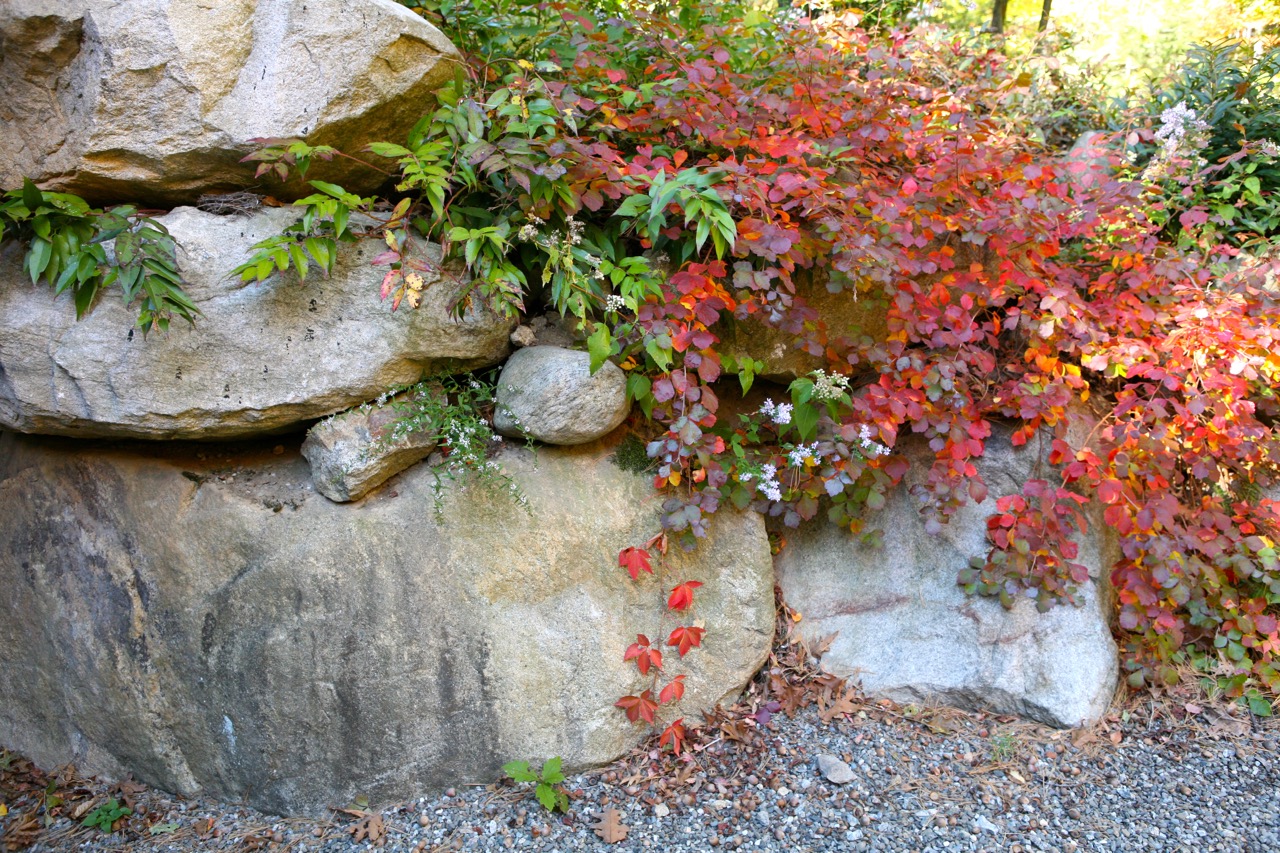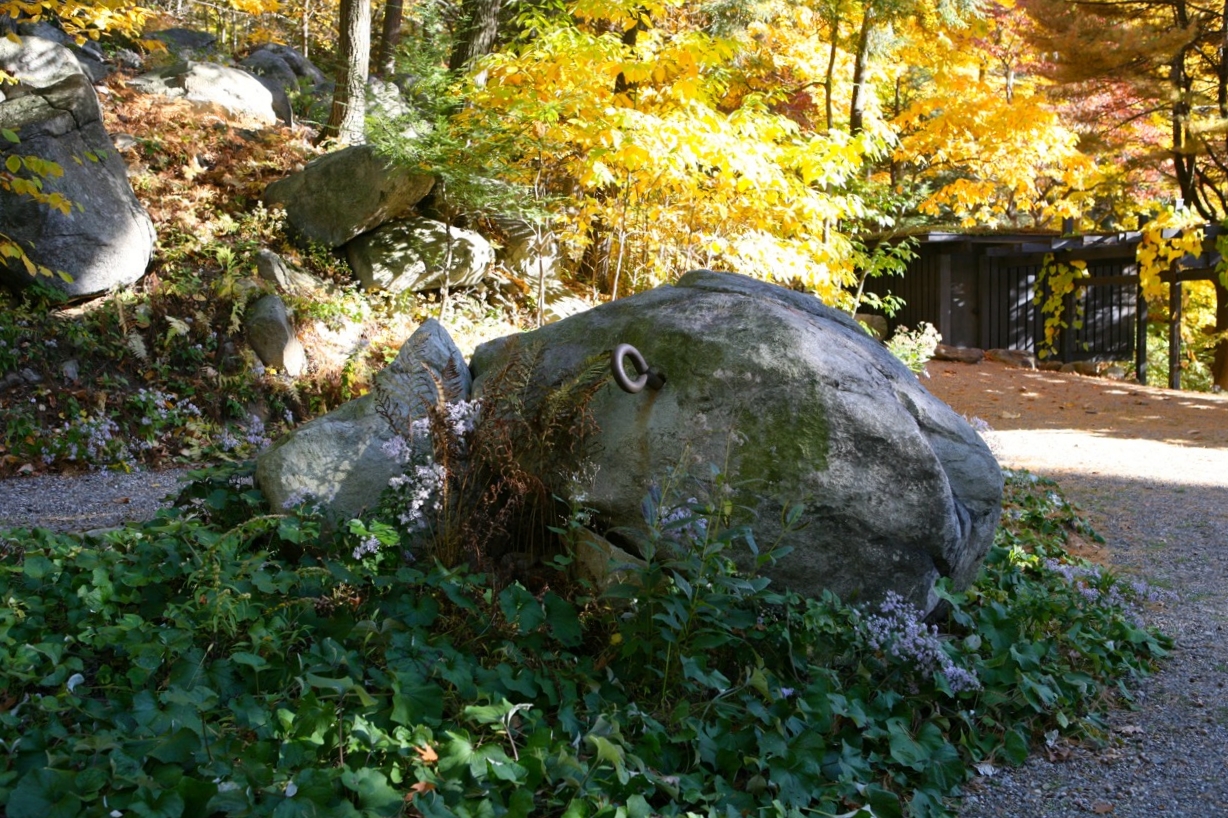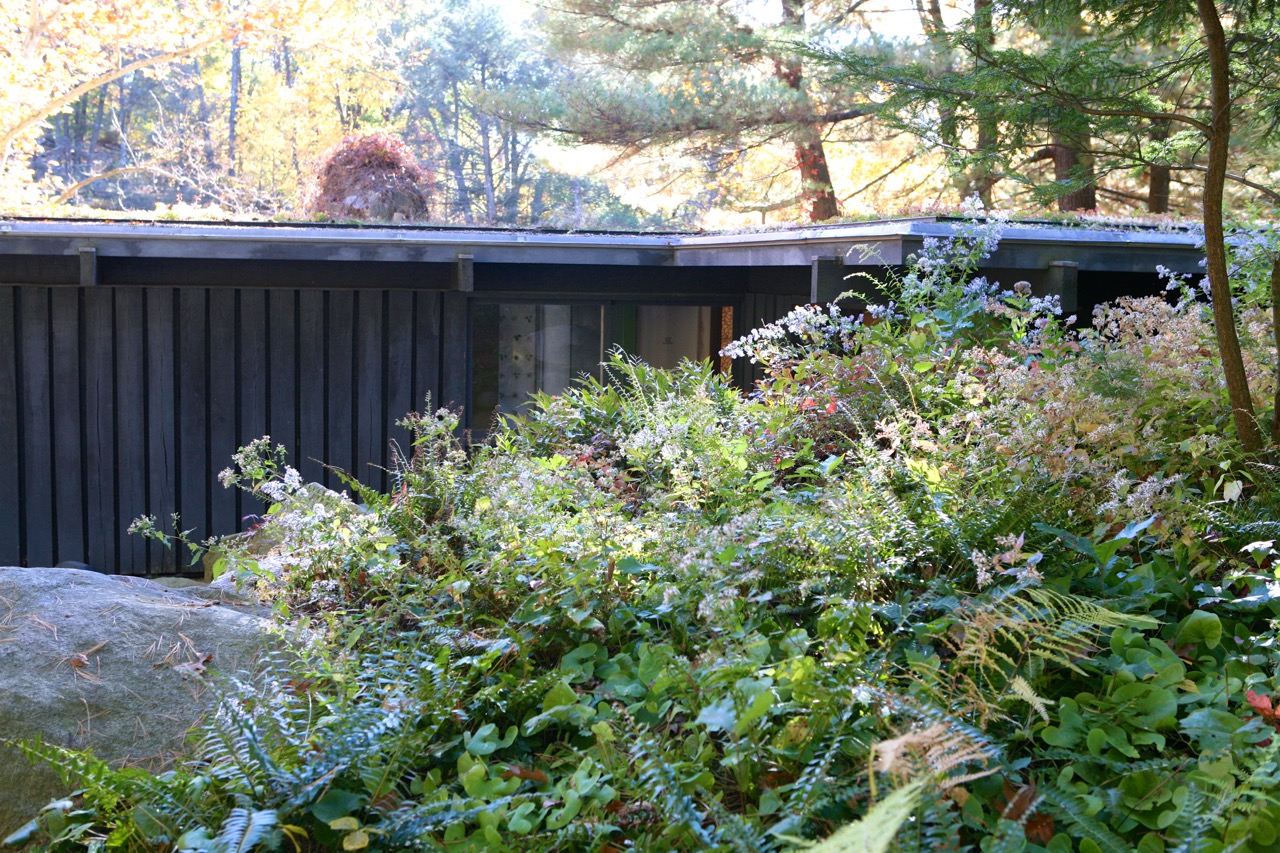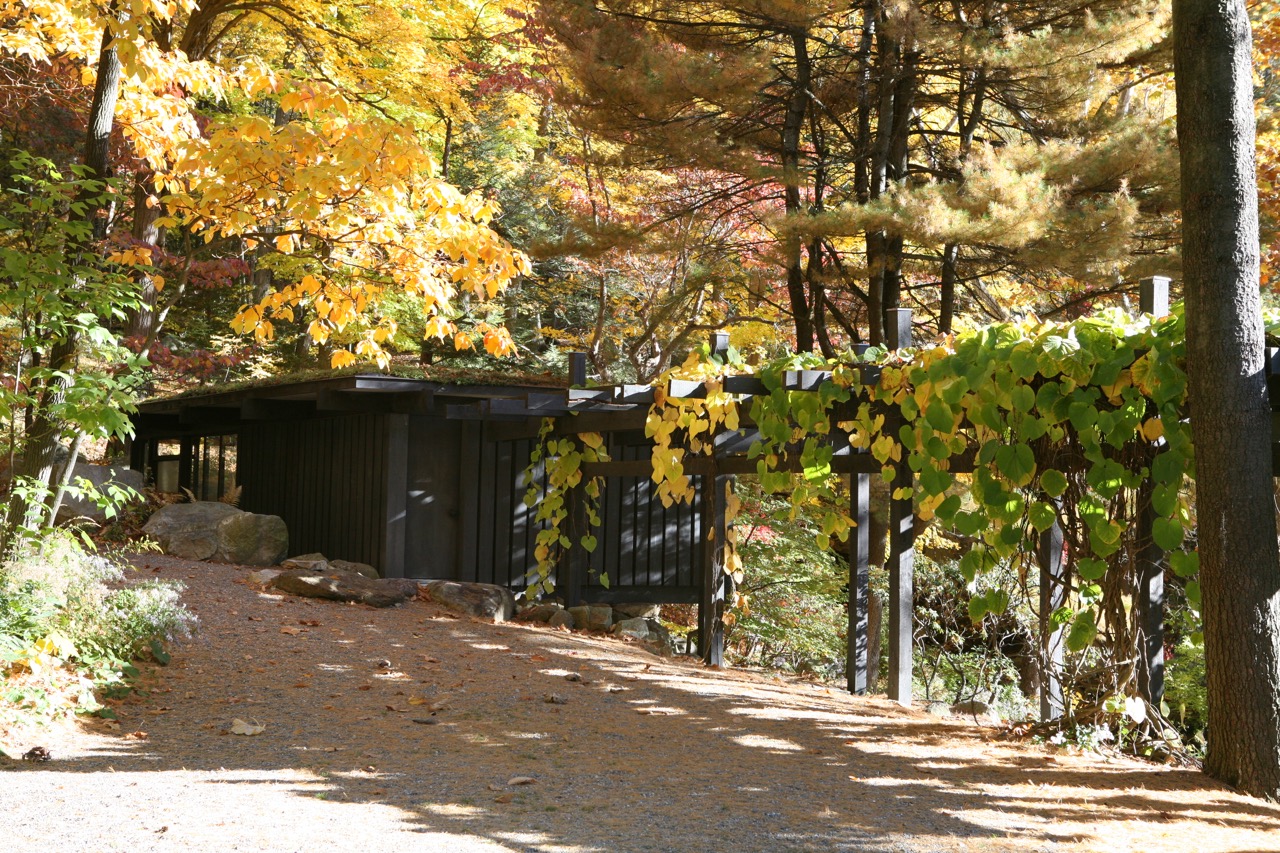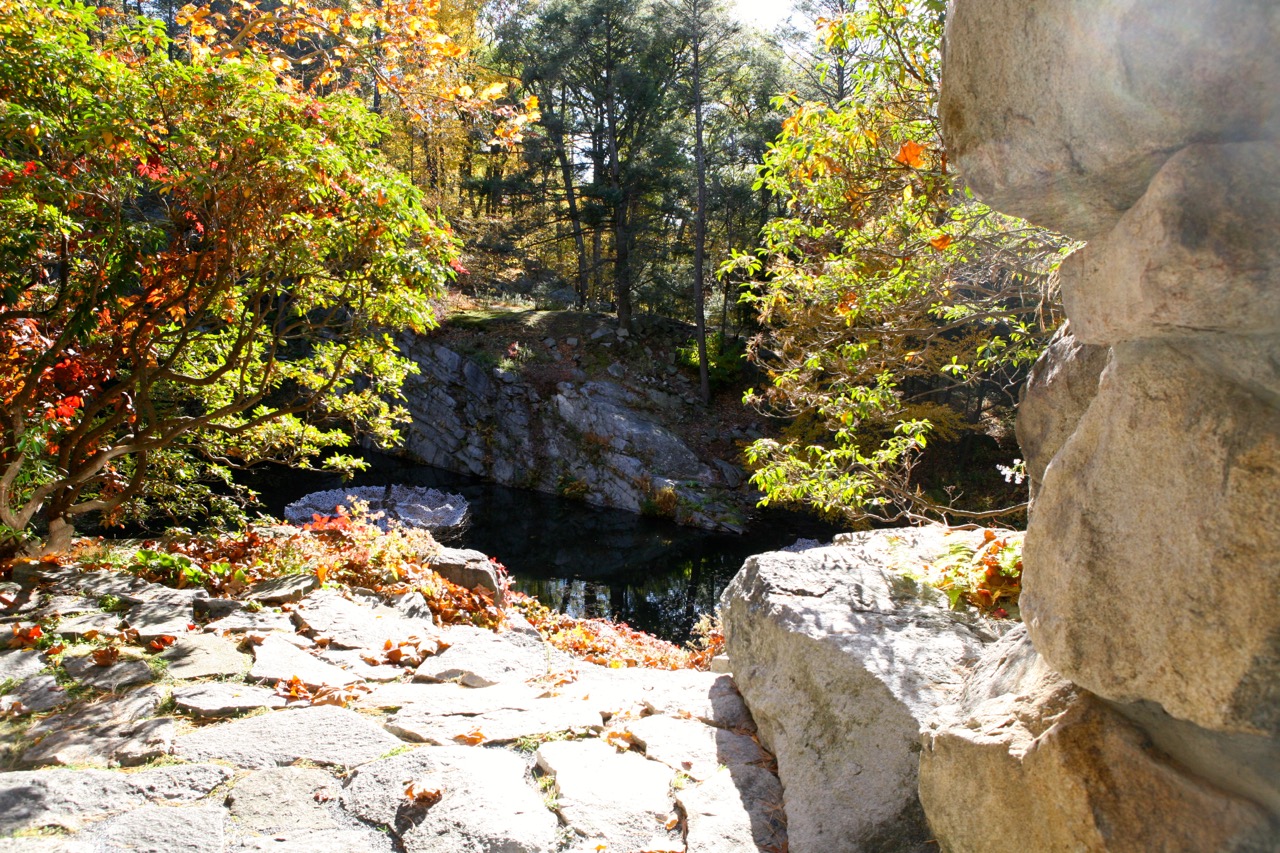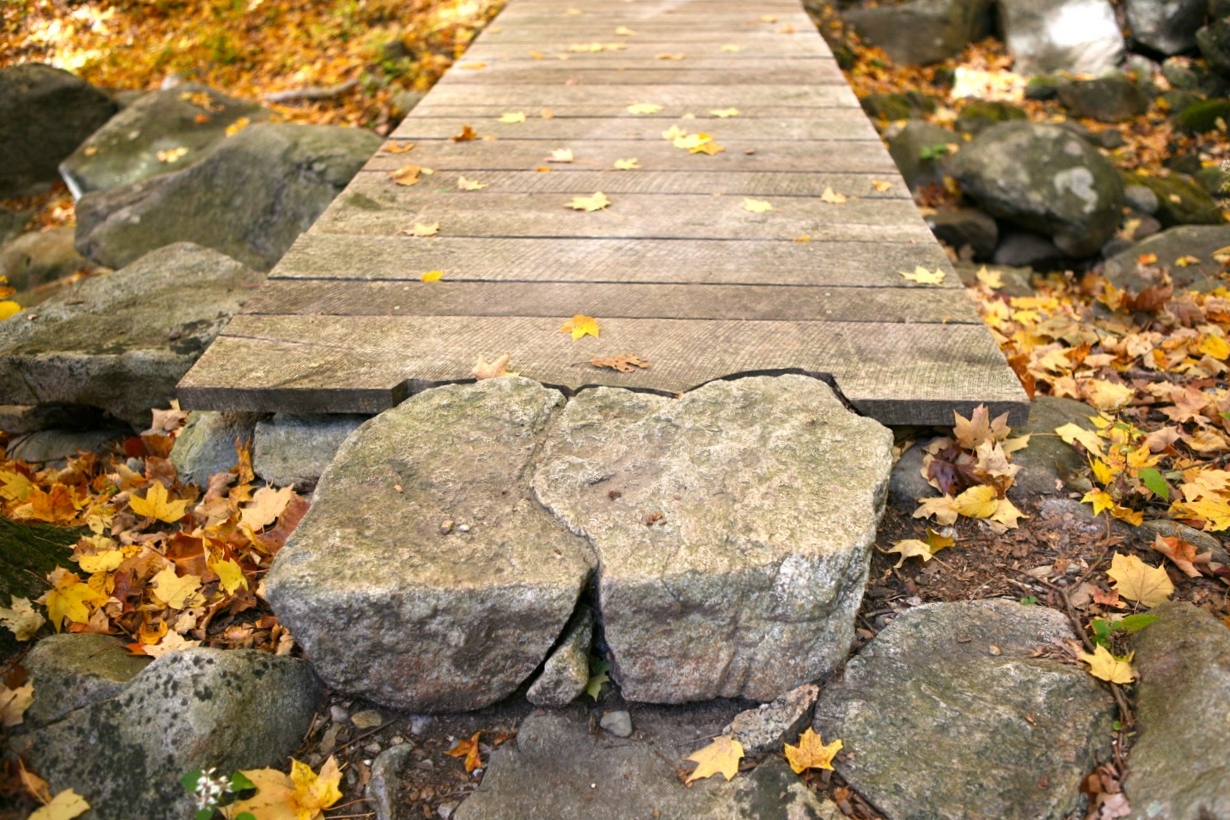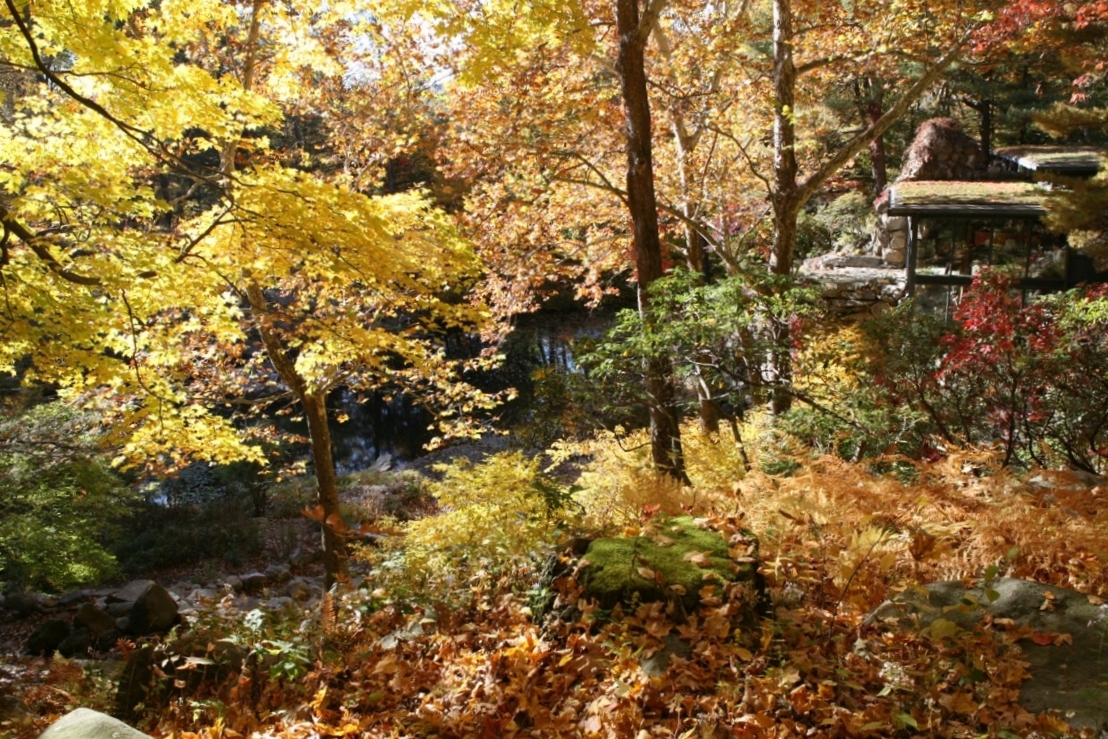Nothing is more fun than having a friend take you through one of their favorite landscapes. Someone who knows a garden well can reveal elements that may not be obvious upon first glance – the things that make a landscape feel special.
On my recent visit to the Hudson River valley, I had the luck to run into a friend who introduced me to Manitoga – pioneering designer Russel Wright’s home and studio. “What, you’ve never been to Manitoga? Let’s go!”
Driving up a steep hill through dense woodland, the walk from the car provided a view of a low slung, mid-century house. The organic modernist structure was a surprising contrast to most of the Hudson valley’s charming century-old farmhouses. No painted clapboards or picket fences here.
Several large boulders appeared like a natural outcropping. Closer inspection showed that they had metal hooks in them. A reminder that the site was originally a quarry. The rocks worked to slow down a visitor’s approach - I wondered if Wright worked around an existing condition or if he had these boulders moved here on purpose.
As we got closer, Dutchman’s pipe draped across a breezeway, it’s bright yellow leaves lit up by the autumn sun. This structured focal point was a place to rest the eyes among the wildness of the trees. But only for a moment because, just beyond the pergola, the view dropped off to reveal that we were standing on a precipice. The pergola framed a dramatic cliff face and lagoon. What drama!
Russel Wright directing workers moving boulders at Manitoga. Source: curbed.com
I felt that Wright was channeling Chinese/ Japanese garden techniques by making water the central feature around which the garden was designed, and creating paths that define how visitors experience the space. For the garden, native plants like ferns, wild orchids, wild thyme, mountain laurel, and moss made the place feel as though it has always been this way. Wright carefully edited each area so that only a few species dominated. Gertrude Jekyll promoted this technique in her 1914 Color Schemes for the Flower Garden where she recommended that we limit sections of woodland to one or two varieties. “The intention [is] to secure simplicity rather than variety, so that in moving about the ground there should be one thing at a time to see and enjoy.” I wondered if he was a fan of her work, too.
We had time for only a quick walk through. It was a treat to be able to experience the landscape for the first time and also to see it through the eyes of someone very familiar with it.
Manitoga is just 1.5 hours from New York City. I hope that you can add a visit the next time you are in the area. Be sure to get tickets in advance as they do sell out.
Don’t forget to bring a friend!
Check out more posts about Manitoga here.
King's Quarry in the late 1800's. View of the quarry that would become Manitoga. Photograph taken from The Quarry Industry in Southeastern New York by Edwin C. Eckel, published 1902.

